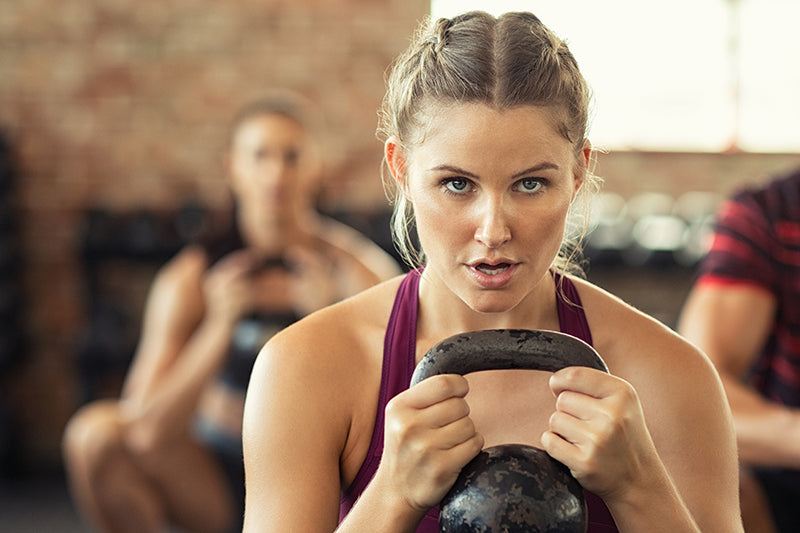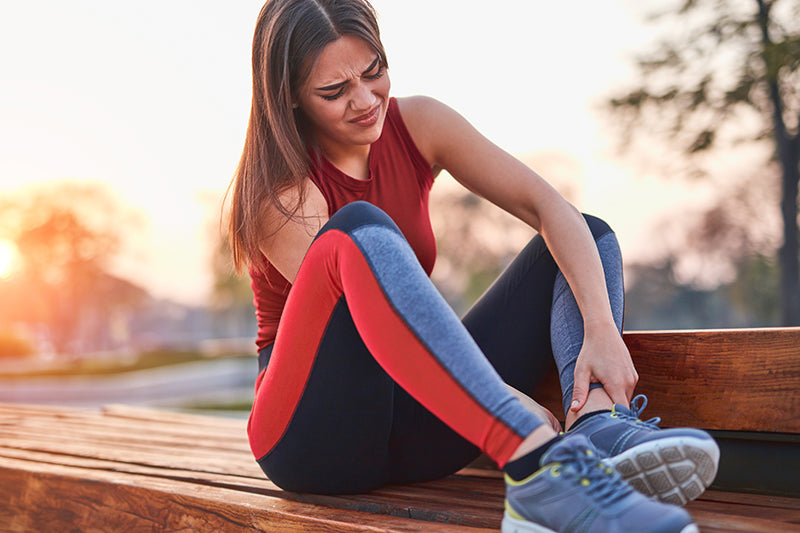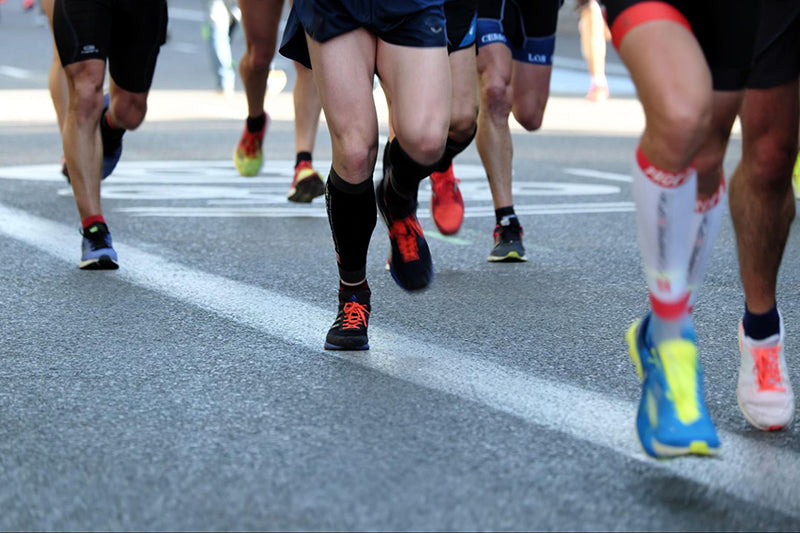Whether you’re wanting to shed a few pounds or get back into shape after the holidays, weight-loss related goals are common at the start of a new year. Typically, these goals revolve around reducing body fat, toning your muscles, or lowering overall weight. Starting a new training program can demand a lot from your body when making changes to follow more strict guidelines around how to exercise and eat. With all this effort, it’s important not to miss out on mobility as a critical ingredient to maximize your success.
So, how does mobility work help you lose weight?

Mobility work enhances performance
Studies support that myofascial release, such as MOBO soft tissue releases, can improve neuromuscular efficiency, flexibility, and joint range of motion.6 2 That means better quality of movement and better movement efficiency which gives you: the ability to increase work output in every single session.9 The result is improved physical capacity (cardiovascular endurance, strength, power, and speed), increased lean mass, better overall conditioning, and reduced body fat.

Mobility work reduces recovery time
An often-overlooked aspect of performance is the recovery needed to repair our soft tissues and return for effective training sessions day after day.10 Soft tissue mobility has been shown to reduce fatigue, limit pain, and prevent delayed onset muscle soreness (DOMS).10 This means that your body is able to keep up with your new workout routine and you’ll see results sooner by avoiding downtime due to injury and fatigue.2

Mobility work improves sleep quality
Sleep is an important aspect of recovery that can affect us physically and mentally. Good sleep allows our muscles and mind to rest and repair, but sleep is hypersensitive to changes in your environment. That’s why an excessively strenuous workout or a stressful day at work can affect the quality of sleep you get. The body can hold tension due to emotional stress as well as physical stress making it hard to fall asleep. By performing soft tissue release as a part of your unwinding routine before bed, you can improve your quality of sleep which will improve brain and immune function, reduce muscle tension, improve blood flow, relieve chronic pain, and reduce stress.15 14
While not as commonly considered, each of these areas plays a major role in weight loss goals and has huge mental and physical benefits that can be paramount during the challenges of a new training program and the changes that your body experiences.
MOBO Can Help
The key to a successful training program that provides weight loss, toning and successfully reaching a fitness or sports goal is the ability to stay consistent with your training, incorporate good recovery strategies, and avoid being sidelined by an injury. Soft tissue mobility and myofascial release give you an edge for success.
Using 4 key techniques, MOBO allows you to accomplish better performance with movement preparation before your workout and releases you can use to recover after your workout. If you’ve tried to reach weight loss goals before but have been slowed down by injuries, limited range of motion or physical or mental blockers, MOBO might be the missing ingredient.
References
- Schleip, R. & Wilke, J. (2021). Fascia. In Sport and Movement: Second Edition. United Kingdom: Handspring Publishing.
- Cheatham, S.W., Kolber, M.J., Cain, M. & Lee, M. (2015). The effects of self-myofascial release using a foam roll or roller massager on joint range of motion, muscle recovery, and performance: A systematic review. Int J Sports Phys Ther. 10(6): 827-838.
- Grabow, L., Young, J.D., Alcock, L.R., Quigley, P.J., Byrne, J.M., Granacher, U., Skrabot, J. & Behm, D.G. (2018). Higher quadriceps roller massage forces do not amplify range-of-motion increases or impair strength and jump performance. J Strength Cond Res. 32(11):3059-3069.
- Halperin, I., Aboodarda, S.J., Button, D.C., Anderson, L.L. & Behm, D.G. (2014). Roller massager improves range of motion of plantar flexor muscles without subsequent decreases in force parameters. Int J Sports Phys Ther. 9: 92-102.
- MacDonald, G.Z., Penney, M.D., Mullaley, M.E., Cuconato, A.L., Drake, C.D., Behm, D.G. & Button, D.C. (2013). An acute bout of self-myofascial release increases range of motion without a subsequent decrease in muscle activation or force. J Strength Cond Res. 27: 812-821.
- Stovern, O., Henning, C., Porcari, J.P., Doberstein, S., Emineth, K., Arney, B.E. & Foster, C. (2019). The effect of training with a foam roller on ankle and knee range of motion, hamstring flexibility, agility, and vertical jump height. Int J Res Phys. 15(1): 39-49.
- Sullivan, K.M., Silvey, D.B., Button, D.C. & Behm, D.G. (2013). Roller-massager application to the hamstrings increases sit-and-reach range of motion within five to ten seconds without performance impairments. Int J Sports Phys Ther. 8: 228-236.
- Chaabene, H., Behm, D.G., Negra, Y. & Granacher, U. (2019). Acute effects of static stretching on muscle strength and power: An attempt to clarify previous caveats. Front Physiol. 10: 1468. doi:10.3389/fphys.2019.01468
- Bradbury-Squires, D.J., Noftall, J.C., Sullivan, K.M., Behm, D.G., Power, K.E. & Button, D.C. (2015). Roller-massager application to the quadriceps and knee-joint range of motion and neuromuscular efficiency during a lunge. J Athl Train. 50: 133-140.
- Fleckenstein, J., Wilke, J., Vogt, L. & Banzer, W. (2017). Preventive and regenerative foam rolling are equally effective in reducing fatigue-related impairments of muscle function following exercise. J of Sports Sci & Med. 16: 474-479.
- Garci-Sillero, M., Benitez-Porres, J., Garcia-Romero, J., Bonilla, D.A., Petro, J.L. & Vargas-Molina, S. (2021). Comparison of interventional strategies to improve recovery after eccentric exercise-induced muscle fatigue. Int J Environ Res Public Health. 18: 647.
- Pearcey, G.E., Bradbury-Squires, D.J., Kawamoto, J.E., Drinkwater, E.J., Behm, D.G. & Button, D.C. (2015). Foam rolling for delayed-onset muscle soreness and recovery of dynamic performance measures. J of Athl Train. 50(1): 5-13. doi:10.4085/1062-6050-50.1.01.
- Udby CL, Impellizzeri FM, Lind M, Nielsen RØ. How Has Workload Been Defined and How Many Workload-Related Exposures to Injury Are Included in Published Sports Injury Articles? A Scoping Review. J Orthop Sports Phys Ther. 2020 Oct;50(10):538-548. doi: 10.2519/jospt.2020.9766. PMID: 32998614.
- Besedovsky L, Lange T, Haack M. (2019) The Sleep-Immune Crosstalk in Health and Disease. Physiol Rev. Jul 1;99(3):1325-1380. doi: 10.1152/physrev.00010.2018. PMID: 30920354; PMCID: PMC6689741.
- Luyster FS, Strollo PJ Jr, Zee PC, Walsh JK; Boards of Directors of the American Academy of Sleep Medicine and the Sleep Research Society. (2012) Sleep: a health imperative. Sleep. Jun 1;35(6):727-34. doi: 10.5665/sleep.1846. PMID: 22654183; PMCID: PMC3353049.



